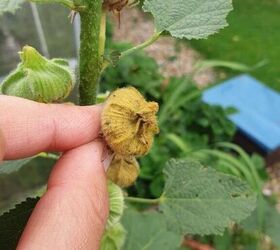
Plants grown in high humidity or places with poor air circulation are especially prone to this. As the rust progresses, you will usually see brown- or rust-colored bumps on the underside of leaves. The first sign of hollyhock rust is yellow spots forming on the lower leaves of the plants. Unfortunately, hollyhocks are prone to rust, a type that preys only on members of the hollyhock family. Your flood might have deposited seed in your flower bed from another. Typically biennial, allow seeds to fall and the clump will persist for many, many years. The lofty spires on our Hollyhock plants are covered with large frilled flowers in beautiful colors. These are the tall stately flowers you looked up to in your grandmothers garden. Queeny Purple Alcea Plant (Hollyhock) 16.49. Hollyhock plants drop numerous seed after they bloom. Hollyhocks are perhaps the definitive old-fashioned garden plant. Creme de Cassis Alcea Plant (Hollyhock) 16.49. If you've ever grown hollyhocks or been up close to admire their blooms, you may have also noticed some not-so-pretty foliage at the bottom. Our Alcea plants for sale are shipped with very well-established root systems. Having a support system is especially important for taller varieties.

Hollyhocks typically grow against something for support, whether a wall, along a fence, or the back of a mixed border. So if you want to get a head start by growing seeds indoors before spring, be sure to plant the seedlings outside while they're still young to prevent disturbing the taproot too much.

This makes these plants a little tricky to transplant. Hollyhocks and many other members of their family have very long taproots. Another important detail about growing hollyhock from seed is that they're easy to start by direct-sowing the seeds straight in the ground. If you plan on planting these from seed in your garden, know that you generally won't have blooms until the second year. Luckily, the seeds are shed and returned to the ground to start the whole process again. These plants have used up all their energy and died at the end of their blooming season. As they bloom, they harness this energy to create as many seeds as possible. In their second year, hollyhocks use their stored energy from the first year to put on a spectacular floral show.

This means that these plants spend their entire first year just growing foliage and storing nutrients for the following year. Many of the most common hollyhock varieties are biennials. Once established in a garden, hollyhocks often self-sow, forming a colony of plants themselves. If the striking pillars of blooms are what you're after, it'll take some patience. As the flowers continue to open, there will typically be several blooms per stalk, all opening at once to create beautiful columns of rainbow-worthy color. Once fully grown and ready to burst into color, these blooms start at the bottom and slowly work their way up, unfurling a little at a time. The flowering stalks of hollyhock, Alcea rosea, are covered in buds from the top down to the rosette foliage at the base.
#Hollyhock seedlings full#
When you have a mass planting of these stately beauties in full bloom, it's really quite a show. With a range of 3 to 8 feet tall, even the short end of the height spectrum is impressive. If there's one defining feature to describe the hollyhock, it's height.


 0 kommentar(er)
0 kommentar(er)
